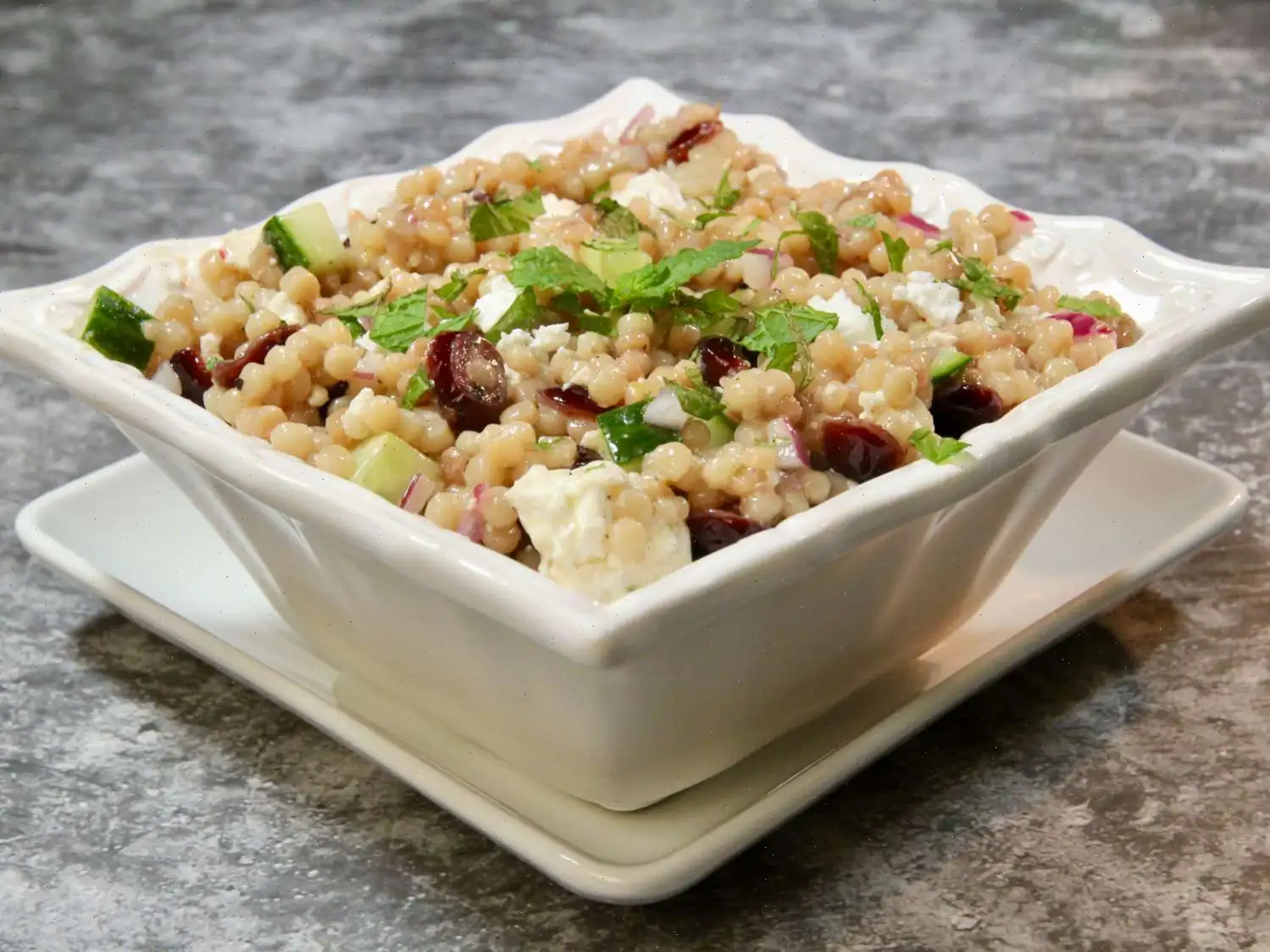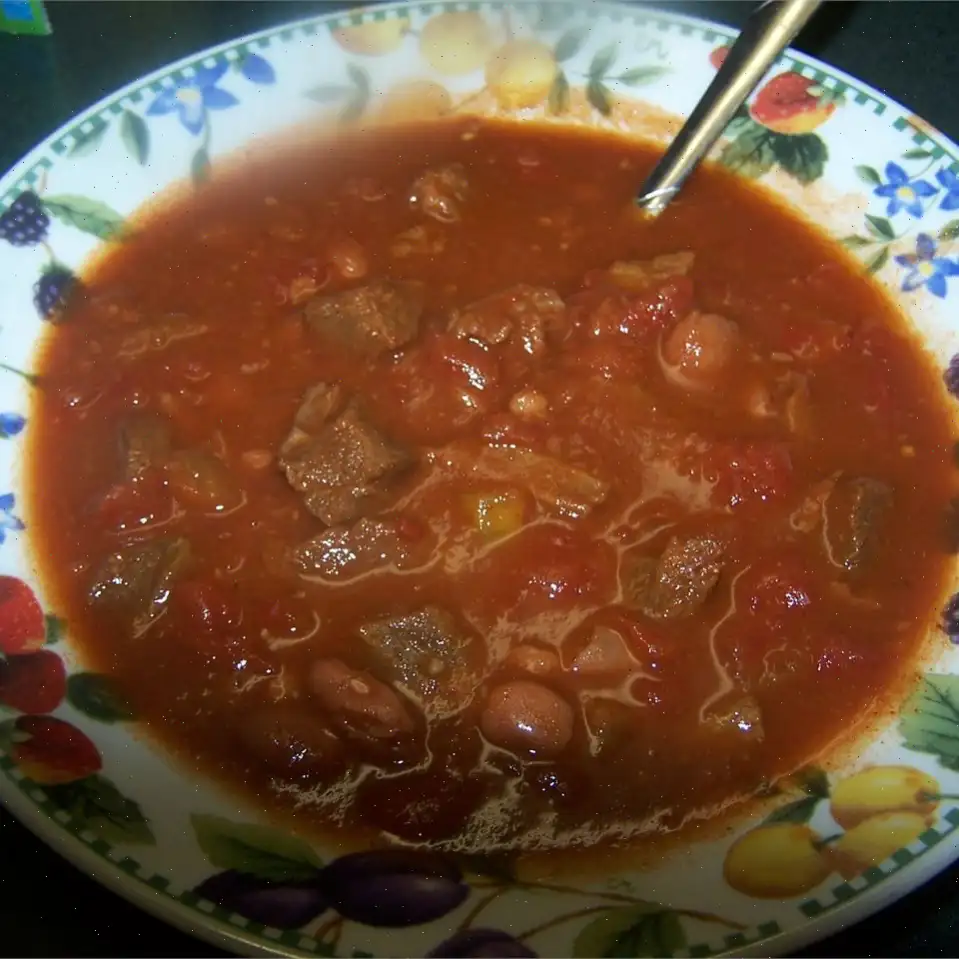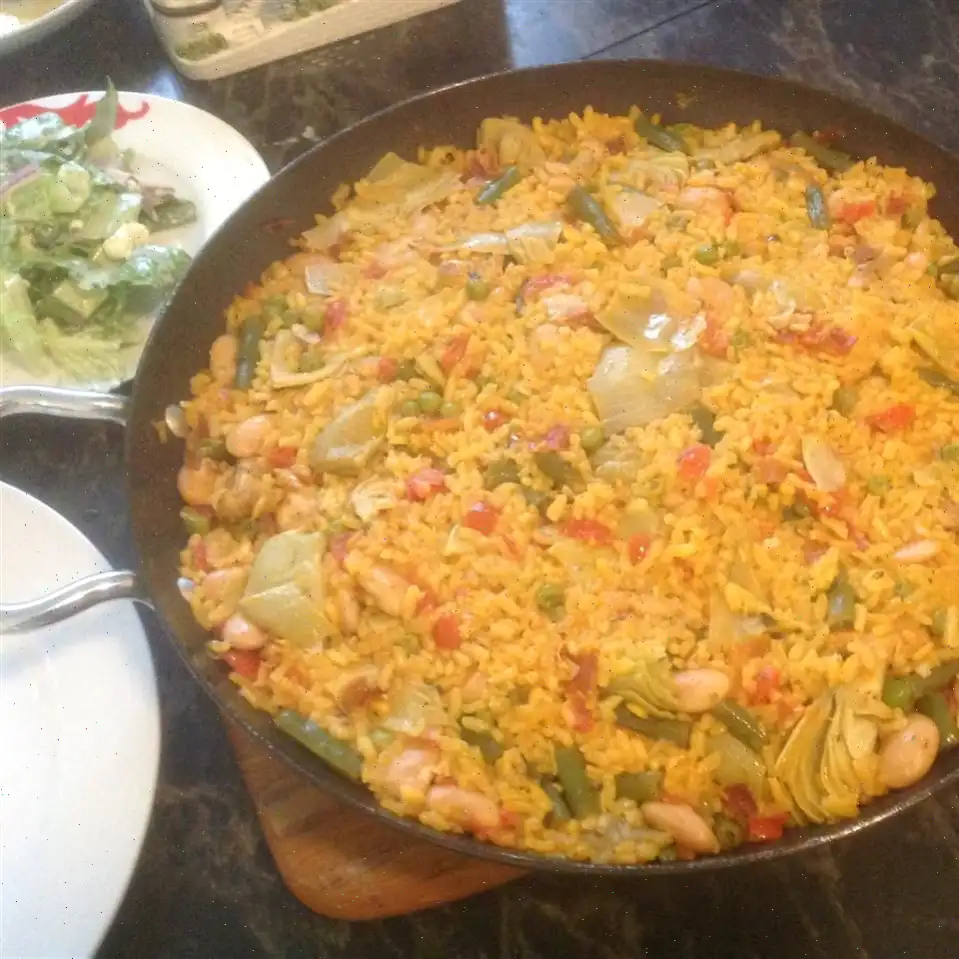
Cucumber Feta Couscous Salad Recipe
Ingredients
Dressing:
- 2 tablespoons white balsamic vinegar
- 1 1/2 teaspoons freshly-squeezed lemon juice
- 1/2 teaspoon Dijon mustard
- 1/2 teaspoon lemon zest
- 1/4 cup olive oil
- Salt and freshly ground black pepper, to taste
Couscous:
- 1 tablespoon olive oil
- 1 cup Israeli couscous
- 1 3/4 cups low-sodium chicken broth
- 1/4 cup dried cranberries (such as Craisins)
- 1/2 cup chopped cucumber
- 1/2 cup crumbled feta cheese
- 3 tablespoons minced red onion
- 1 tablespoon chopped fresh mint
Directions
Step 1: In a small bowl, combine the white balsamic vinegar, lemon juice, Dijon mustard, and lemon zest. Whisk in the olive oil until the mixture is smooth and well combined. Season with salt and freshly ground black pepper to taste. Set the dressing aside.
Step 2: Heat olive oil in a saucepan over medium heat. Add the Israeli couscous and stir occasionally, toasting it for 4 to 5 minutes until it turns light golden brown.
Step 3: Pour in the chicken broth, then stir in the dried cranberries. Bring the mixture to a boil. Once boiling, reduce the heat to medium-low, cover, and simmer for about 8 to 9 minutes until most of the liquid has been absorbed.
Step 4: Remove the lid and allow the couscous to cool for about 15 minutes. Fluff the couscous with a fork.
Step 5: Once cooled, stir in the chopped cucumber, crumbled feta cheese, and minced red onion. Drizzle the prepared dressing over the couscous mixture and toss gently to combine.
Step 6: Taste the salad and adjust seasoning with salt and pepper if needed. Garnish with fresh chopped mint leaves.
Step 7: Serve immediately, or chill in the fridge for later. Enjoy!
Cook's Note: If white balsamic vinegar is unavailable, you can substitute it with white wine vinegar for a similar flavor.
Nutrition Facts (per serving):
- Calories: 315
- Fat: 22g
- Carbs: 24g
- Protein: 7g
Nutrition Breakdown:
- Total Fat: 22g (28% DV)
- Saturated Fat: 5g (27% DV)
- Cholesterol: 17mg (6% DV)
- Sodium: 298mg (13% DV)
- Total Carbohydrate: 24g (9% DV)
- Dietary Fiber: 2g (5% DV)
- Total Sugars: 10g
- Protein: 7g (14% DV)
- Vitamin C: 2mg (2% DV)
- Calcium: 110mg (8% DV)
- Iron: 1mg (6% DV)
- Potassium: 179mg (4% DV)
The Cucumber Feta Couscous Salad is a light and refreshing dish that combines the nutty texture of Israeli couscous with the creamy tang of feta cheese, the crunch of cucumber, and a zesty dressing. It's a perfect dish for a summer lunch, a side dish at dinner, or even a quick and healthy snack. But beyond its delicious flavor, this dish has an interesting history, distinct regional variations, and some unique facts that make it stand out from other salads.
History of the Cucumber Feta Couscous Salad
The origins of couscous date back to North Africa, where it has been a staple food for centuries. Couscous itself is made from semolina wheat, and its earliest forms are thought to have been prepared by the Berber people in present-day Morocco, Algeria, and Tunisia. Over time, couscous spread across the Mediterranean and became integrated into the cuisines of countries such as Italy, Greece, and France. While this salad itself doesn't have a specific historical origin, it reflects the flavors of Mediterranean and Middle Eastern cuisine, where ingredients like couscous, feta, cucumber, and fresh herbs are commonly used. The addition of feta and cucumbers gives it a refreshing Mediterranean flair, while the use of couscous offers a hearty, satisfying base.
Regional Variations
Though couscous is most commonly associated with North Africa, it has been embraced across many Mediterranean countries. In Italy, couscous is often served with seafood and vegetables, while in the Middle East, couscous might be paired with lamb and aromatic spices. The addition of feta cheese in this salad leans towards the Greek culinary tradition, where feta is often paired with fresh vegetables and olive oil. Cucumber, a common ingredient in Greek salads, adds a cool, crisp texture that balances the richness of the feta. While variations exist, the combination of couscous with cucumbers and feta has become a popular fusion dish in many contemporary Mediterranean-inspired kitchens.
How is it Different from Similar Dishes?
At first glance, this Cucumber Feta Couscous Salad might appear similar to other Mediterranean salads, like the classic Greek salad, which also features feta and cucumber. However, the main difference lies in the base of couscous rather than traditional greens or tomatoes. Couscous offers a more substantial texture, giving the salad an extra element of heartiness. Additionally, the slightly nutty flavor of toasted couscous pairs perfectly with the tangy feta and the sweetness of dried cranberries, making this salad a more filling and diverse dish compared to other simpler salads.
Where is it Typically Served?
The Cucumber Feta Couscous Salad is an extremely versatile dish. It can be served as a side dish to complement grilled meats or seafood, or as a light main course during hot summer months. This salad is a common offering at Mediterranean-themed restaurants, buffets, or potlucks due to its balance of fresh flavors and ease of preparation. It can also make for an excellent packed lunch or picnic meal because it stores well in the fridge and can be served cold. Whether at a casual outdoor gathering or a more formal dinner, this dish is sure to impress with its vibrant colors and fresh, delicious flavors.
Interesting Facts about Cucumber Feta Couscous Salad
- Couscous was once a luxury: Historically, couscous was considered a dish for the wealthy in North Africa, as it required meticulous preparation and was made from durum wheat, a prized ingredient.
- Feta cheese has ancient roots: Feta is one of the oldest cheeses in the world, with origins dating back to the ancient Greeks. Its made from sheep or goat's milk, which gives it its distinctive crumbly texture and tangy flavor.
- Mint adds a refreshing touch: Fresh mint is often added to Mediterranean dishes to provide a cool contrast to the richer ingredients. In this salad, mint enhances the freshness of the cucumber and balances the richness of the feta cheese.
- Healthy and customizable: This salad can easily be modified to suit dietary preferences. For example, you can substitute quinoa or bulgur for couscous for a gluten-free option, or swap feta for a vegan cheese to make it plant-based.
Conclusion
The Cucumber Feta Couscous Salad is not only a delicious and refreshing dish but also a great example of Mediterranean culinary traditions fused with modern flavors. Whether youre looking for a light lunch, a side dish for dinner, or something to take to a potluck, this salad offers the perfect balance of textures and flavors. Its versatility, ease of preparation, and vibrant ingredients make it a popular choice for any occasion.








